Let’s be honest – travel between nations with a narrowboat in the UK is limited unless you are prepared to pay for trucks to transport your boat! To get to Scotland or Ireland trucking is required, but to reach Wales – you just keep cruising which is what we’ve done this week.
We’ve spent the week gently moving towards Wales, and in and out of Wales too. The border is far from straight, and the canal crosses and recrosses it.

We started in England on Monday morning with a necessary fill up of water (no idea of the size of our tank but we know about a fortnight with the two of us plus dog on board is a good time to refill).
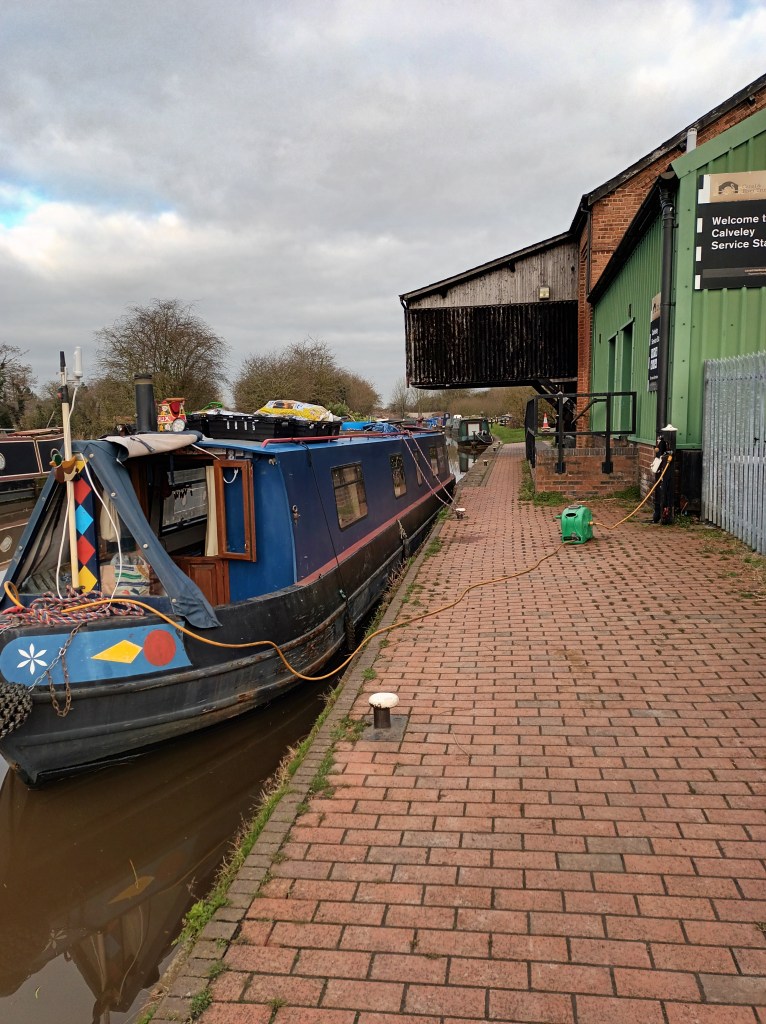
From Calveley Services it was down to Nantwich to find a laundrette from which I returned laden with damp washing while Steve headed for a supermarket to stock up on necessities. Then while the stove rapidly dried the washing for us, we set off for the Llangollen Canal. It branches off the Shropshire Union just outside Nantwich alongside the Hurleston Reservoir. You enter the Llangollen through the bottom gates of the Hurleston flight of four locks which took us up 34ft. We were quickly through these – mainly because it’s muck spreading time in the fields and the maize stubble alongside the locks was getting a very whiffy covering!
The 44.5mile Llangollen canal is justifiably one of the most popular holiday cruising routes there is. It wends its way through farmland, woodland, bird-rich meres, marshes, and market towns with some real highlights along its length. The two spectacular aqueducts of Chirk and Pontycysyllte lie ahead of us. There are just 21 locks along its length but to keep you entertained en route there are lift bridges, tunnels and some eye-catching architecture. We did wonder at one point if we’d been fortunate enough to stray not only into Wales but France!
We last cruised the Llangollen in the heat of summer in July 2011, but we’ve never travelled its complete length. There are some holiday boats around but it is very peaceful at this time of the year. There are no queues for locks, which can be both frustrating and a sociable time in the summer sun when you meet new people and hear their boating experiences.
From Llantsilio near Llangollen water flows from the River Dee into the canal which carries it down to the reservoir at Hurleston providing drinking water for Cheshire towns. This creates strong flows at the locks where the bypass weirs discharge – it can prove challenging as you can see to get neatly into the locks when this combines with blustery winds!

Whilst it has been chilly in the wind, we’ve enjoyed some spectacular sunrises and sunsets this week, and experienced a range of moorings. The views from our home and office have been varied and rewarding. It has been a peaceful week which makes us even more grateful for our life. That deep sense of gratitude is perhaps what has prompted the significant boaters’ responses to support the struggles of the Ukrainian people as they battle war with Russian invaders. Not only can we all contribute through our regular shopping in supermarkets which offer chances to add donations to the final bill, but we can also donate to food collections, knitting, crochet and clothing projects all coordinated via social media.
We know the value of canals as peaceful places for leisure mainly, for boating and fishing, walking and cycling and on the Llangollen for the practicality of moving drinking water. In Ukraine and Russia canals are mainly for irrigation for food production of crops and to ensure drinking water. The 250-mile-long Northern Crimean Canal lies at the heart of the Ukraine/Russian War. The canal links the Crimea which was annexed in 2014 by Putin with the Ukrainian Dnieper River and its water. It is the main source of water for Crimea. Last summer the Ukrainians rapidly and secretly built a dam at Kalanchak to block the flow of water to Russia. Kalanchak was occupied by the Russians, and just a week ago Ukrainians bravely took to its streets singing their national anthem in defiance, and demanding the Soviet withdrawal. As the protests happened, Russian media reported that soldiers had removed the Ukrainian dam.
Being moored in Ellesmere as we are now seems particularly poignant. It was here that Eglantyne Jebb was born – she went on to found Save the Children – a key aid agency working to alleviate the current conflict. Jebb also drafted the Declaration of the Rights of the Child in 1924 – so relevant today. In memory of her work the Ellesmere Sculpture Trail includes this moving work by John Merrill called Refuge. It represents a child displaced by conflict supporting its own shelter as it seeks refuge.
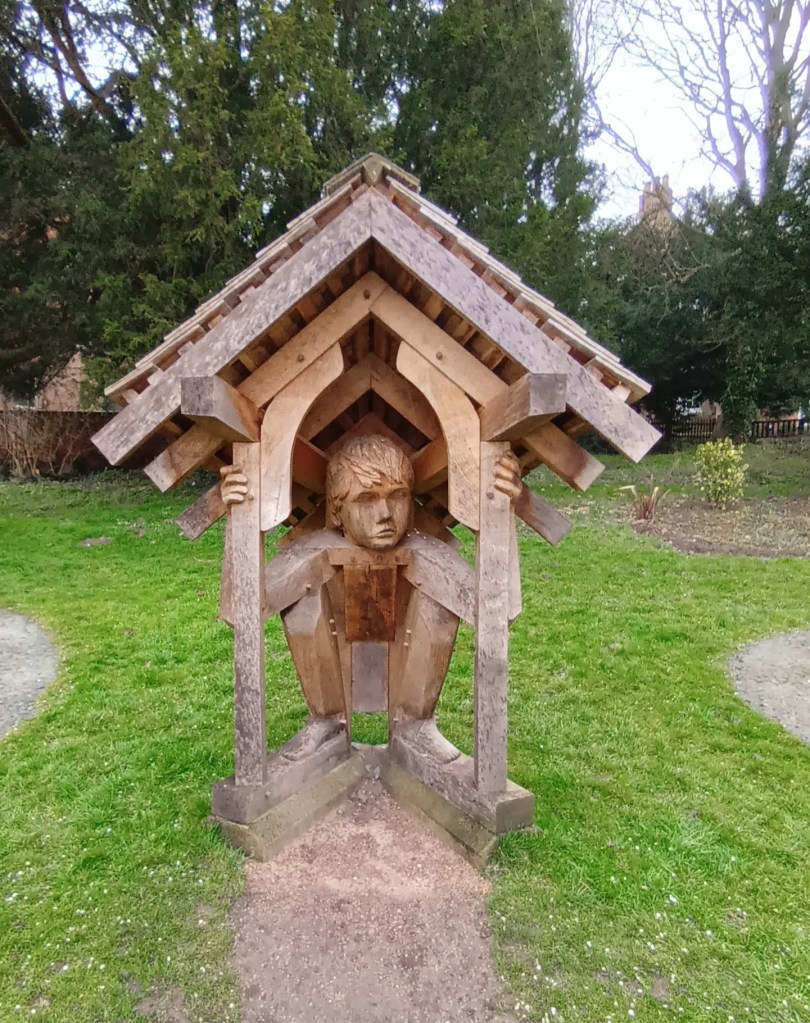
This bitter bloody conflict over water, land and rights is directly threatening millions of children, their safety, security and basic human rights. Like so many in the UK we are supporting Ukranian people as best we can. We are fortunate not to be facing the horrors Ukrainians are experiencing daily. It is a somber lesson for us all to be grateful for what we have, to support those who face conflict and seek refuge, and to fight continuously to protect peace.
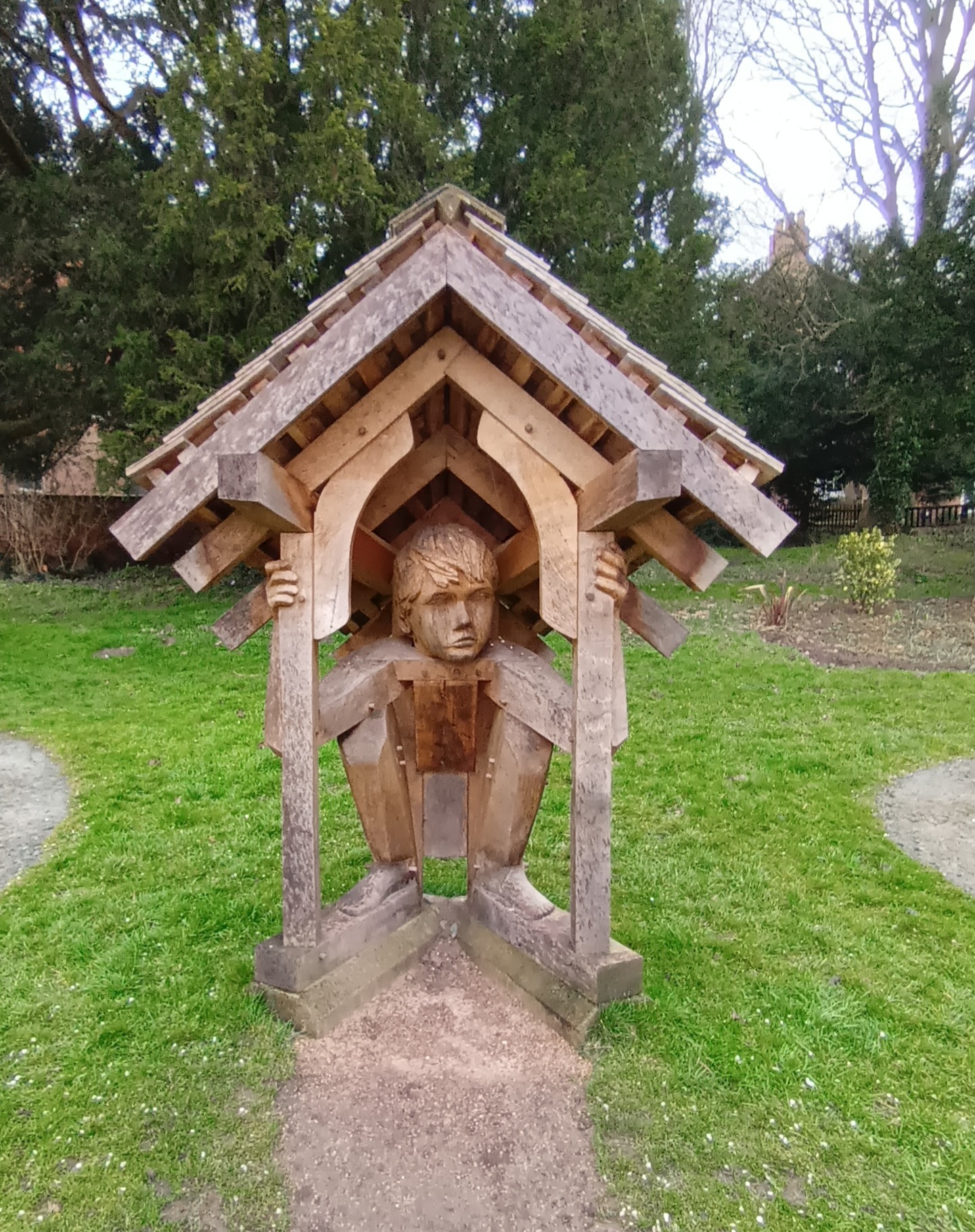
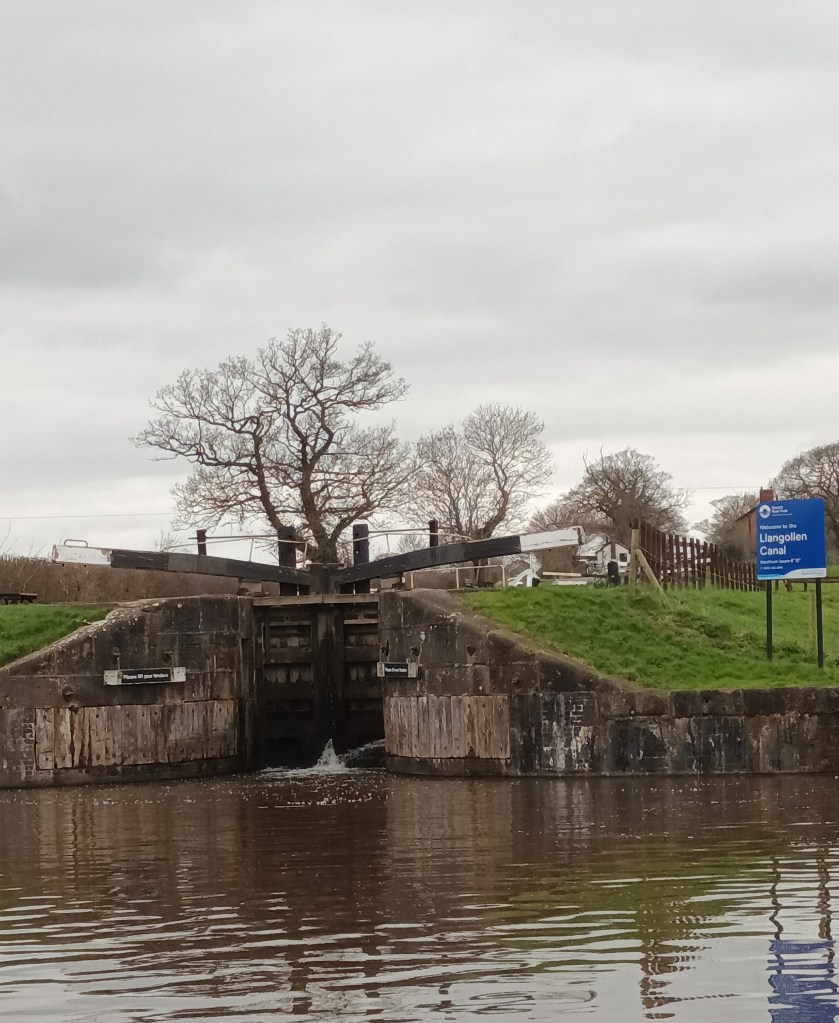
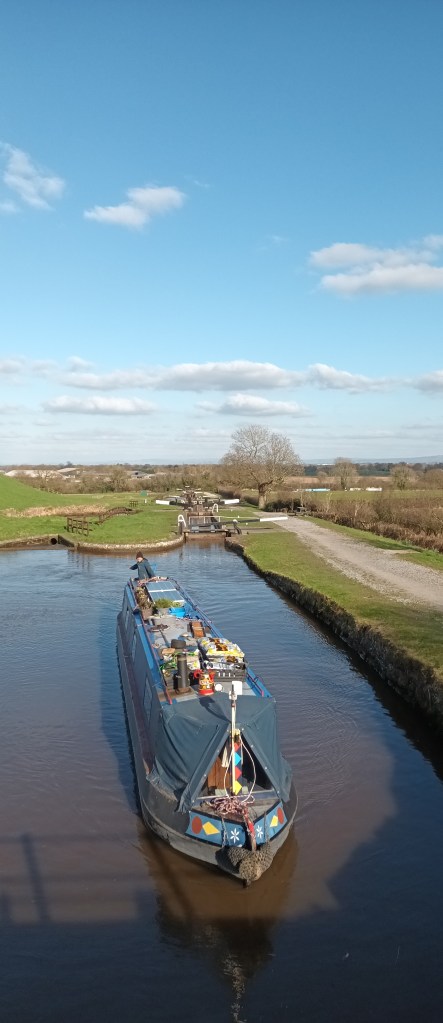

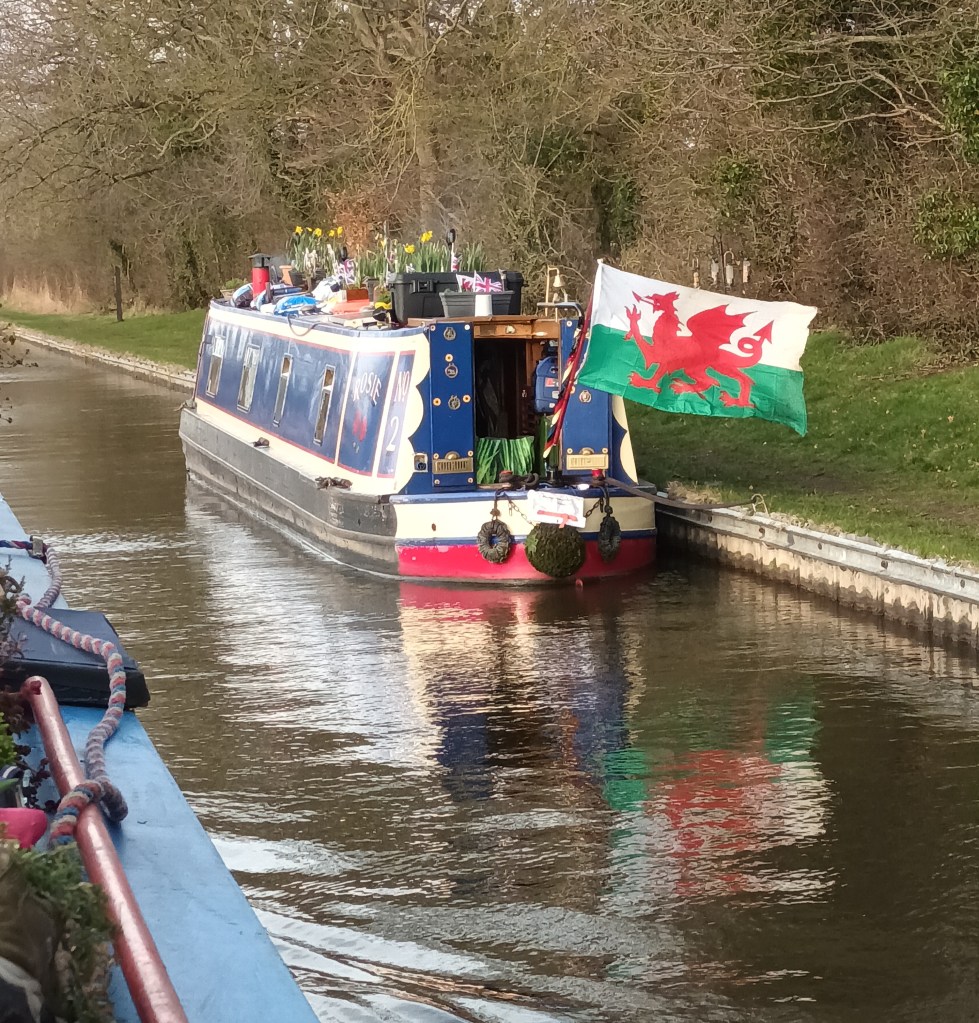
Thank you Deena for yet another inspiring and educative article. Whenever I read your entries, I follow up with research into the new subjects you’ve highlighted; today it will be the canal system bewteen Ukraine and Russia. We explored the Ellesmere Sculpture Park about three years ago but sadly, found it rather neglected, the works themselves though we’re touching and thought provoking.
LikeLiked by 1 person
I think they’ve done some work perhaps during the lockdowns to the Sculptures – though we did find a few encased in tape and undergoing major renovation. I have no idea if we saw them all – rather liked surprises by coming upon sculptures rather than following the map of them!
LikeLike